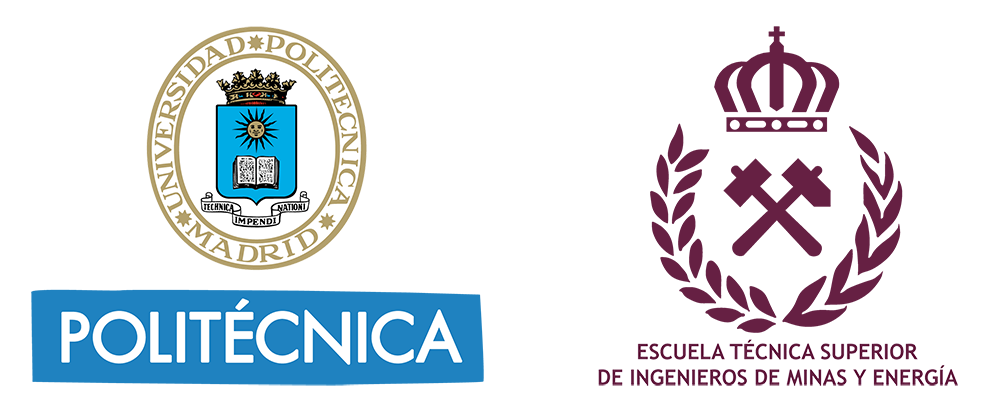The current proposed project is rooted in a CYTED Program Network, which has been dedicated to strengthening the relationships between researchers in the field of Industrial Rocks and Minerals for more than a decade. This network, called the “Red Iberoamericana XIII-C, de Rocas y Minerales Industriales en Iberoamérica”, has contributed to the development of numerous projects, books, conferences, meetings, and papers on various topics, and brought together numerous university research groups, laboratories, companies, and administration agencies, from all the countries of Ibero-America, Portugal and Spain.
There was particular interest in the subject of Pozzolanic materials for cement manufacturing, and several international meetings were organized, with the aim of exchanging experiences between researchers in these subjects. The impetus for these meetings came from the then Coordinator of the XIII-C Network of CYTED, Professor Benjamín Calvo Pérez.
The first meeting on the application of Industrial Rocks and Minerals organized by CYTED's XIII-C Network took place in the ‘Instituto Superior Minero-Metalúrgico de Moa’ (ISMM) in Cuba (a partner in this project) within the framework of CINAREM (Conferencia Internacional sobre Aprovechamiento de Recursos Minerales) on the 14th, 15th and 16th of November 2000. On the part of the XIII-C Network, Pedro Oyhantabal (Uruguay), Mónica Martiz (Venezuela) and Mercedes Rosell (Cuba) attended, as well as the organizer, Mr. Alfredo Coello, from Moa (Cuba). The second meeting, called “Reunión temática y curso internacional sobre Rocas y Minerales Industriales y sus aplicaciones”, took place in Guayaquil, Ecuador, from the 4th to the 8th March 2002, under the coordination of professors Paúl Carrión, from the ‘Escuela Superior Politécnica del Litoral’ (ESPOL) and Alfredo Coello, from the ISMM, both members of the Network XIII-C. Representatives of the network from Cuba, Colombia, Chile, Uruguay, and Ecuador also attended and lectured. In January 2004, the third meeting on the subject was held, known as “Reunión monográfica sobre las aplicaciones de las Rocas y Minerales Industriales de Brasil y Ecuador”, in the ‘Centro de Tecnología Mineral de Río de Janeiro’ (CETEM), with the assistance of the Coordinator of the XIII-C Network, Professor Benjamín Calvo Pérez, and 14 representatives of Brazilian, Ecuadorian, and Spanish companies and institutions.
In addition to these meetings, various groups in the Network have been working continuously on the issue of pozzolans, mainly in natural zeolites. These achievements may include, but are not limited to:
The ‘Centro Técnico de Desarrollo de Materiales de Construcción de la Habana’ (CTDMC) has developed studies on the application of natural pozzolans as a basic component of concretes and mortars subjected to high performance (high performance concrete), which achieve resistances greater than 70.0 MPa, with the possibility of reducing the mass, increasing the thermal insulation, giving greater resistance against corrosion in reinforced concretes, and other properties that support the suitability of their use. The R&D programs for the use of pozzolanic materials in civil construction in Cuba began with the industrial production of portland-pozzolanic cement from 1974, for which the volcanic tuffs of the ‘Palmarito de Cauto’ deposit were used, in ‘Santiago de Cuba’; subsequently, from the 1980s, other natural materials (clinoptilolite-heulandite) were used as a mineral additive and light natural aggregate in the production of concretes and mortars.
The ISMM has extensive experience in the research and development of rock and industrial mineral deposits, such as pozzolans, especially natural zeolites, and everything related to technologies for their treatment, as well as their applications in the removal of heavy metals from industrial waste, and the recovery of ammonium from solid waste. In recent years it has developed joint research with the ‘Instituto de Materiales y Reactivos’ at the ‘Universidad de la Habana’ aimed at obtaining modified zeolites, for the recovery of various metals and anions from solutions and residues, and their subsequent use in agri-business.
In recent years the work of the ISMM has focused on the characterization and evaluation of vitreous and zeolitized tuffs from the province of Holguin, for use as pozzolanic materials, achieving important results that support the mining of these deposits, but that deserve a more complete and integral characterization of their substantial composition, and technical tests that can support these projects, for which international collaboration is essential.
The ‘Escuela Técnica Superior de Ingenieros de Minas y Energía’ (ETSIME) has organized and directed the ‘Ibero-American Construction Materials Days’ for more than a decade, this being one more initiative, of the many extracted from the activities of the CYTED XIII-C Network. The activities were carried out every year, in different member countries of the network, in the following order:
- I Ibero-American Conferences on “Characterization and Standardization of Construction Materials" (Cements, aggregates, mortars, and concretes). Location: Madrid, Spain. Date: 2001.
- II Ibero-American Conferences on "Characterization and Standardization of Construction Materials" (Cements, aggregates, mortars, and concretes). Location: Havana, Cuba. Date: 2002.
- III Ibero-American Conferences on "Characterization and Standardization of Construction Materials" (Cements, aggregates, mortars, and concretes). Location: San Juan, Argentina. Date: 2003.
- IV Ibero-American Conferences on "Characterization and Standardization of Construction Materials" (Cements, aggregates, mortars, and concretes). Location: Tegucigalpa, Honduras. Date: 2004.
- V Ibero-American Conferences on "Characterization and Standardization of Construction Materials" (Cements, aggregates, mortars, and concretes). Location: Panama City, Panama. Date: 2007.
- VI Ibero-American Conferences on "Characterization and Standardization of Construction Materials" (Cements, aggregates, mortars, and concretes). Location: Mar del Plata, Argentina. Date: 2008.
- VII Ibero-American Conferences on "Characterization and Standardization of Construction Materials" (Cements, aggregates, mortars, and concretes). Location: Valencia, Spain. Date: 2009.
- VIII Ibero-American Conferences on "Characterization and Standardization of Construction Materials" (Cements, aggregates, mortars, and concretes). Location: Lima, Peru. Date: 2010.
- IX Ibero-American Conferences on "Characterization and Standardization of Construction Materials" (Cements, aggregates, mortars, and concretes). Location: Quito, Ecuador. Date: 2011.
- X Ibero-American Conferences on "Characterization and Standardization of Construction Materials" (Cements, aggregates, mortars, and concretes). Location: Cáceres, Spain. Date: 2012.

